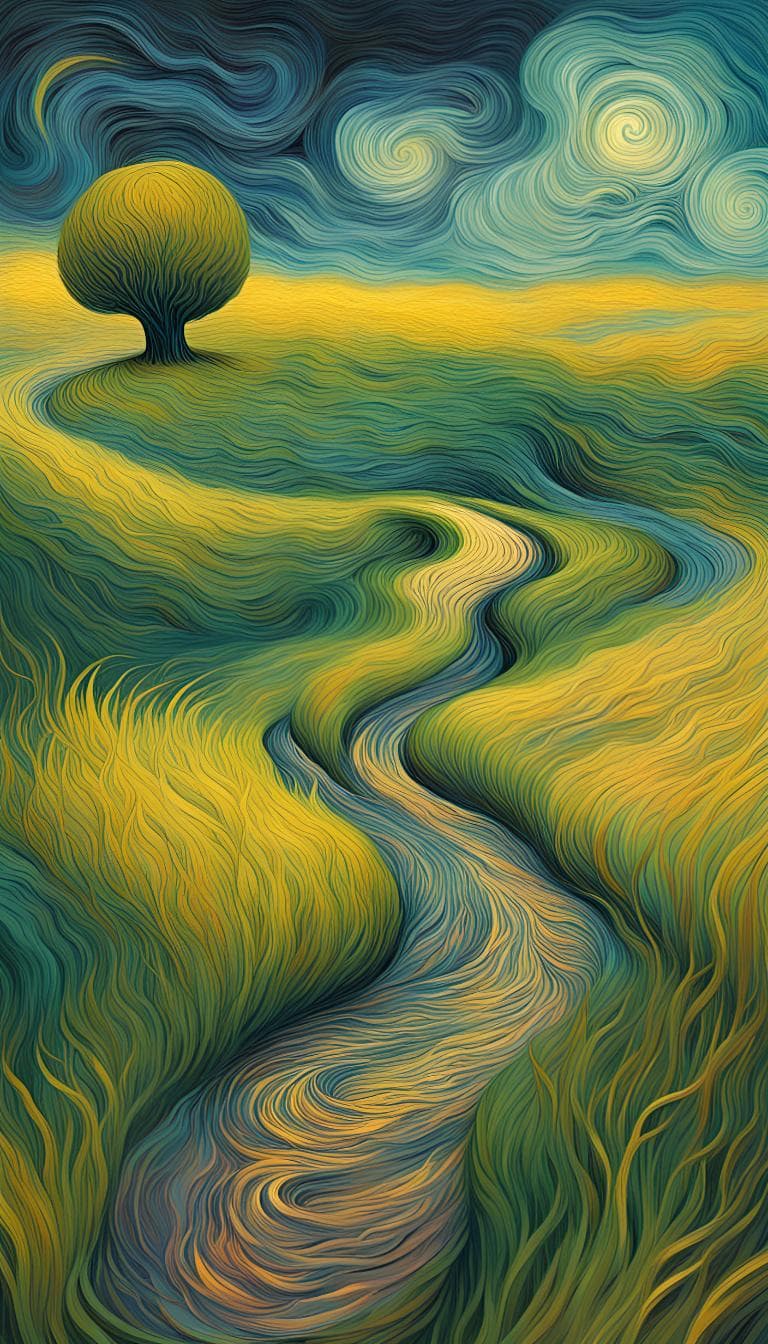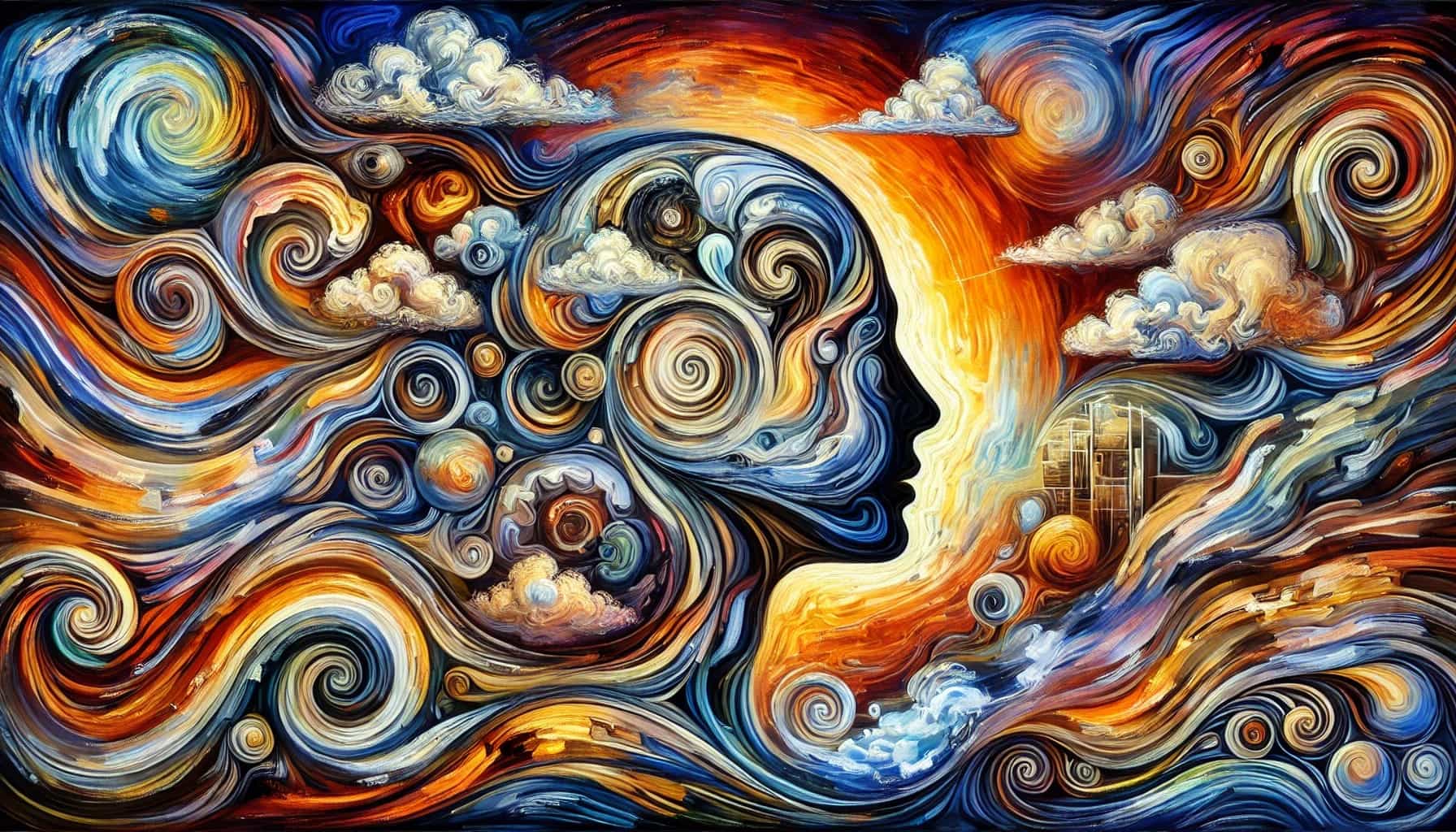The Language of Inner States: Art as the Psychological Infrastructure of Sanity
Abstract
At its most fundamental level, art serves as the infrastructure of sanity. This is not metaphorical—it is a literal psychological function that proves essential to human survival. Without the cultural mirrors that art provides to validate our psychological states, we would face great difficulty to confirm whether our inner experiences fall within the spectrum of sane human experience.
1. Introduction
1.1 Art as the Infrastructure of Sanity
The ability to recognize our own psychological reality as "sane" depends on finding echoes of our inner states in culture. Without these reference points—whether in literature, visual art, music, or other forms of expression—we have no way to validate the legitimacy of our experiences. It's akin to being in a room with no mirrors, unable to confirm our own reflection. The question "am I crazy?" becomes difficult to answer in the absence of cultural validation.
This makes artists more than just creators or entertainers—they are the maintainers of an essential psychological infrastructure. When they capture complex psychological states with precision, they create permanent validation points that others can use to confirm their own sanity. These artistic expressions become lighthouses helping others navigate the turbulent waters of human consciousness.
1.2 The Internal Mirror of Language
When we attempt to translate our psychological states into words or other forms of expression, we engage in a profound act of self-reflection. This process isn't merely about expressing what we already know; it's about creating a linguistic or artistic mirror that can reflect our inner experience back to us. The satisfaction we feel when finding the exact right words or encountering the perfect artistic expression suggests that accurate articulation serves not just as a tool for communication, but as a means of confirming the reality of our experience to ourselves.
The precision of this articulation matters deeply. Superficial or approximate descriptions leave room for doubt, that nagging uncertainty about whether our experiences are "real" or whether we might be "crazy." Only when we achieve a precise match between our inner state and its expression does this doubt begin to subside.

Universe 00110000
2. The Bridge to Shared Experience
2.1 Connection Through Art
What makes this articulation particularly powerful is its potential for connection. Even when we express our psychological states privately—in journals or personal writings—we are engaging in an implicit reach toward human connection. By packaging our experience in the shared medium of language or art, we create the possibility of being understood by others, even if we never actually share these expressions.
This potential for understanding serves as an antidote to psychological isolation. The very fact that our experience can be captured in human expression suggests that it falls within the spectrum of shared human consciousness.
When we allow others to recognize and validate our articulated experience, it moves from the realm of potential madness into the territory of normal human experience.
2.2 Artists as Therapists of the Collective Psyche
Great artists function as therapists of the collective psyche, creating permanent markers of shared psychological experience that continue to heal and validate long after their creation. When Van Gogh captured inner turmoil in turbulent skies or when Kafka articulated the absurd alienation of modern life, they weren't just creating art—they were establishing crucial reference points for human psychological experience.
These artists often created from places of intense personal psychological experience, perhaps feeling isolated themselves. Yet in articulating their own experience precisely, they ended up creating universal touchstones that help others validate their own psychological reality. Their personal exploration becomes part of collective psychological infrastructure.
3. The Social Construction of Normal
3.1 Normalcy Through Shared Understanding
What we consider "normal" is, in many ways, simply what is shared and understood by others. When enough people acknowledge and share a particular psychological state, it becomes normalized through this shared recognition.
However, this normalization can only occur when psychological states are accurately articulated and culturally validated. Art plays a crucial role in this process by providing the precise language and imagery needed to validate complex psychological experiences.
3.2 Breaking the Isolation
The ultimate power of precise articulation in art lies in its ability to break through psychological isolation. When we encounter artistic expressions that matches our inner states, we receive crucial validation that our experiences are comprehensible within the framework of human understanding.
This validation through recognition becomes a form of collective witness to our internal reality. It confirms that our experiences, no matter how complex or challenging, are part of the broad spectrum of human experience rather than indicators of individual madness.
4. Conclusion
Understanding art as the infrastructure of sanity fundamentally changes how we view its role in human society. It's not just about aesthetic pleasure or cultural expression, art provides the essential infrastructure we need to validate our own psychological reality. Without these cultural mirrors, we would face great difficulties to confirm the sanity of our inner experiences.
This places a profound responsibility on artists as maintainers of our collective psychological well-being. Each precise articulation of a psychological state becomes more than just expression—it becomes a crucial reference point that others can use to validate their own experience and maintain their grasp on sanity.
In preserving art, therefore, we are not just maintaining cultural artifacts—we are preserving crucial validation points for human psychological experience. Each artwork that precisely captures a psychological state becomes part of humanity's essential infrastructure for maintaining and confirming sanity.

